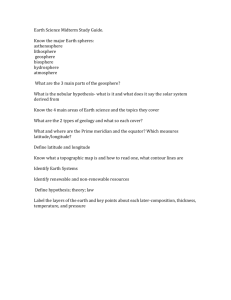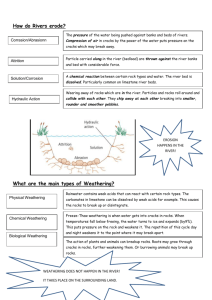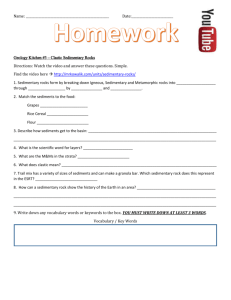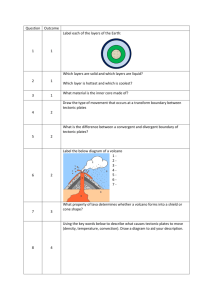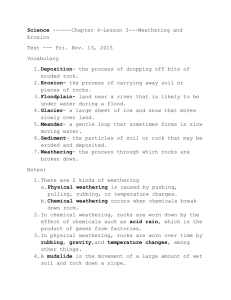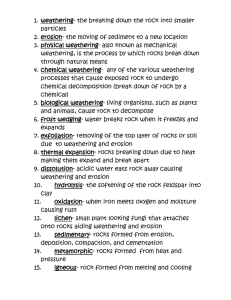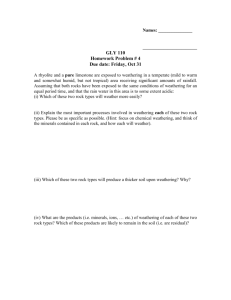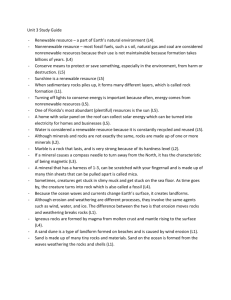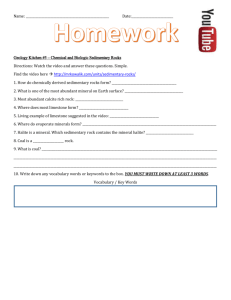Study Guide for the Weathering, Mass Wasting, and Sedimentary
advertisement
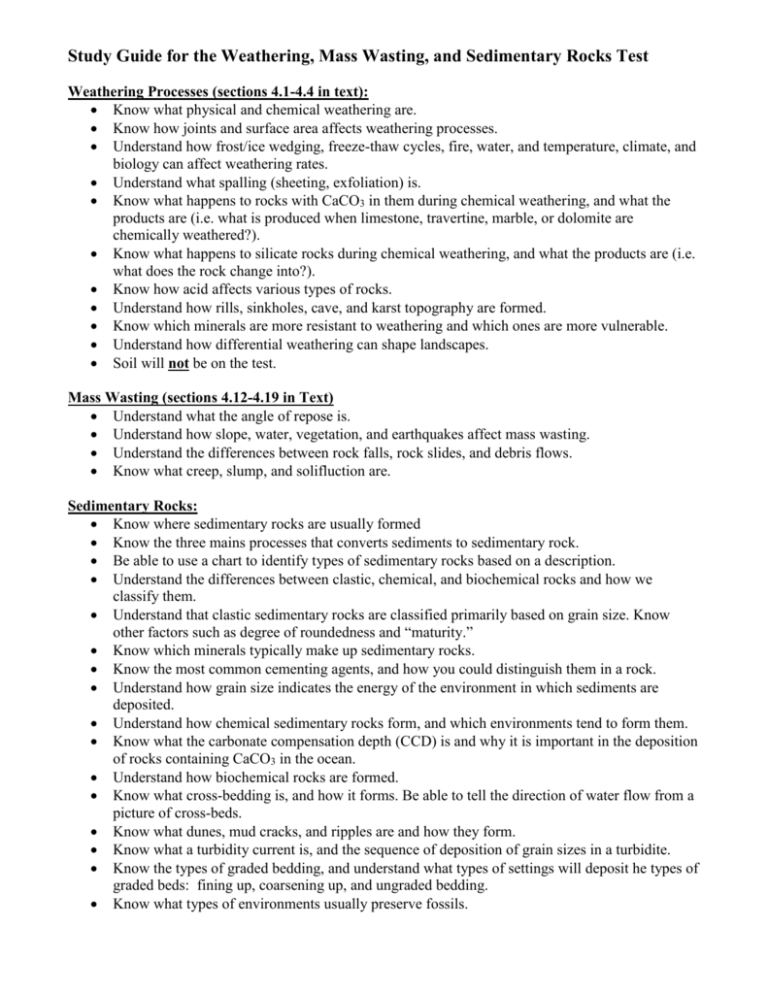
Study Guide for the Weathering, Mass Wasting, and Sedimentary Rocks Test Weathering Processes (sections 4.1-4.4 in text): Know what physical and chemical weathering are. Know how joints and surface area affects weathering processes. Understand how frost/ice wedging, freeze-thaw cycles, fire, water, and temperature, climate, and biology can affect weathering rates. Understand what spalling (sheeting, exfoliation) is. Know what happens to rocks with CaCO3 in them during chemical weathering, and what the products are (i.e. what is produced when limestone, travertine, marble, or dolomite are chemically weathered?). Know what happens to silicate rocks during chemical weathering, and what the products are (i.e. what does the rock change into?). Know how acid affects various types of rocks. Understand how rills, sinkholes, cave, and karst topography are formed. Know which minerals are more resistant to weathering and which ones are more vulnerable. Understand how differential weathering can shape landscapes. Soil will not be on the test. Mass Wasting (sections 4.12-4.19 in Text) Understand what the angle of repose is. Understand how slope, water, vegetation, and earthquakes affect mass wasting. Understand the differences between rock falls, rock slides, and debris flows. Know what creep, slump, and solifluction are. Sedimentary Rocks: Know where sedimentary rocks are usually formed Know the three mains processes that converts sediments to sedimentary rock. Be able to use a chart to identify types of sedimentary rocks based on a description. Understand the differences between clastic, chemical, and biochemical rocks and how we classify them. Understand that clastic sedimentary rocks are classified primarily based on grain size. Know other factors such as degree of roundedness and “maturity.” Know which minerals typically make up sedimentary rocks. Know the most common cementing agents, and how you could distinguish them in a rock. Understand how grain size indicates the energy of the environment in which sediments are deposited. Understand how chemical sedimentary rocks form, and which environments tend to form them. Know what the carbonate compensation depth (CCD) is and why it is important in the deposition of rocks containing CaCO3 in the ocean. Understand how biochemical rocks are formed. Know what cross-bedding is, and how it forms. Be able to tell the direction of water flow from a picture of cross-beds. Know what dunes, mud cracks, and ripples are and how they form. Know what a turbidity current is, and the sequence of deposition of grain sizes in a turbidite. Know the types of graded bedding, and understand what types of settings will deposit he types of graded beds: fining up, coarsening up, and ungraded bedding. Know what types of environments usually preserve fossils. Vocabulary: Acid rain Angle of repose Breccia Calcite Carbonate Compensation Depth (CCD) Chalk Chemical Weathering Chert Clastic Clay Coal Conglomerate Creep Cross-bedding Debris Flow Differential Weathering Dunes Evaporites Freeze-thaw cycles Frost or ice wedging Joints Karst Topography Limestone Lithification Mud Cracks Permafrost Physical Weathering Ripples Rock Fall Rock Slide Sandstone Shale Siltstone Sinkholes Slump Solifluction Spalling (exfoliation weathering, sheeting) Stalactites Stalagmites Turbidity current
